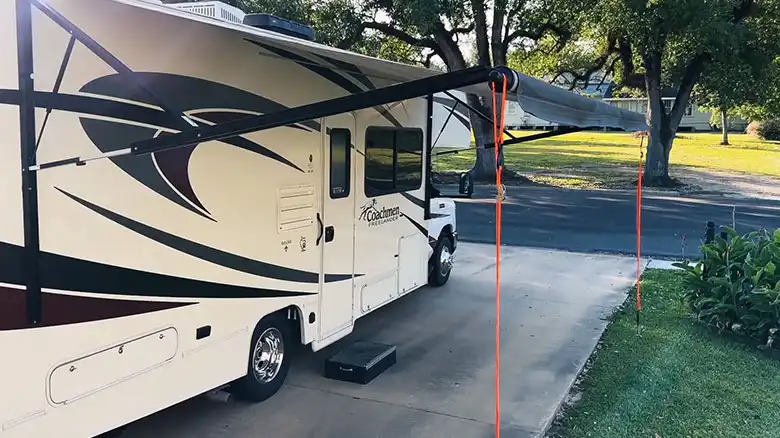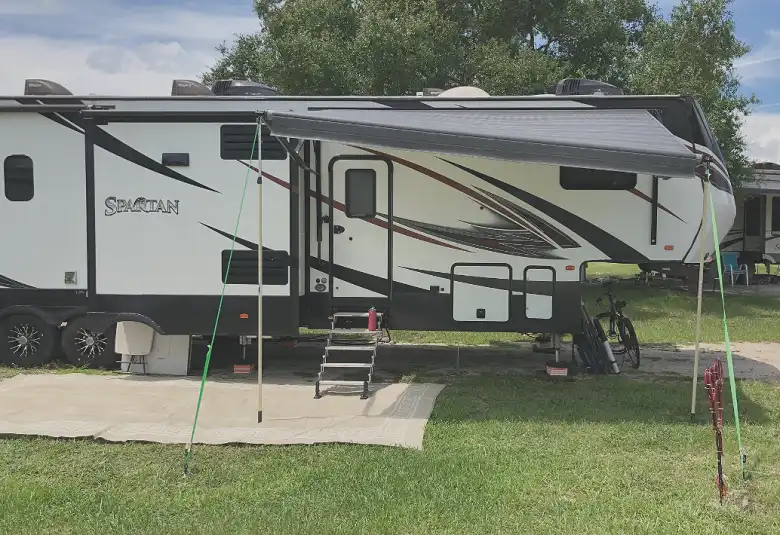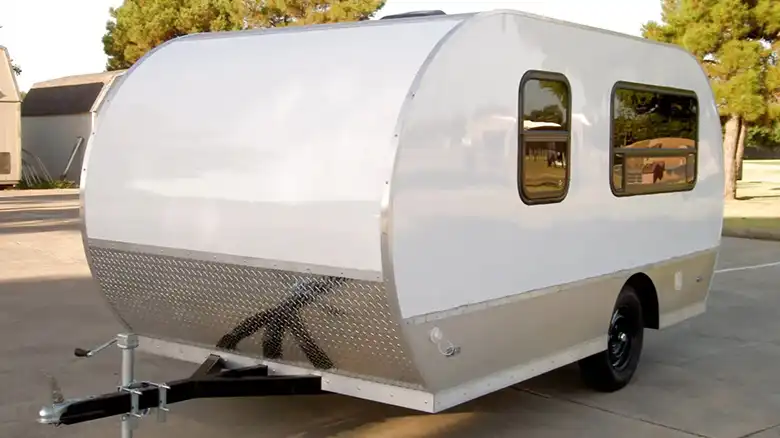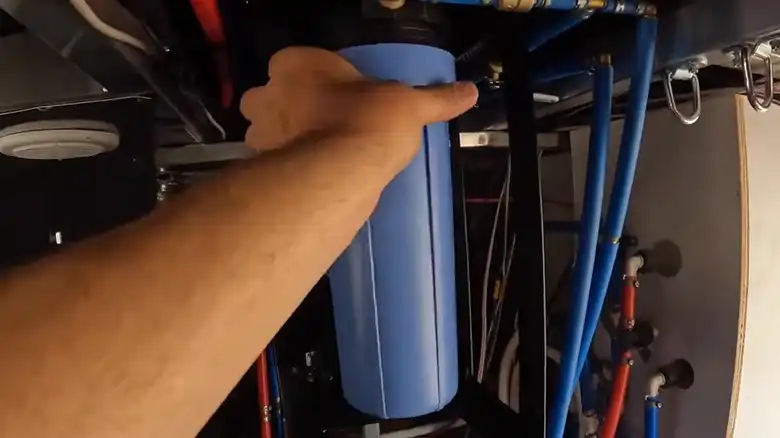As an RV enthusiast who loves spending long weekends outdoors with my family, I know firsthand the incredible value a good awning adds to the camping experience. Awnings provide welcome shade on sunny days, shelter from rain showers, and expanded living space for lounging and cooking out. But they can also become a huge liability in high wind conditions if proper precautions aren’t taken. I’ve seen the aftermath – shredded fabric, mangled arms, and damaged vehicles – that serve as stark reminders of this vulnerability.
According to insurance claims data, wind and storm events account for nearly 20% of RV-related claims, often involving awning damage ranging from a few hundred to tens of thousands of dollars. But with proactive planning and utilizing the right techniques, you can secure your awning to withstand even blustery conditions.
In short, to secure an RV awning in windy conditions, the top priority is fully retracting the awning to its travel position. If partial opening is needed, install tie-down kits for ground anchoring and anti-flappers on the roller tube to prevent flapping damage. Routine inspections, maintenance, campsite choice, and advanced auto-retracting awnings also help maximize awning wind protection!

What Risks and Forces Are Involved?
To start, it’s important to recognize and respect the immense stresses wind can exert on your RV awning.

Most manufacturers advise retracting awnings completely when gusts start exceeding 15-20 mph. This threshold matches typical awning design limits. Beyond this speed, the dynamic forces multiply quickly.
At 30 mph sustained winds, the pressure load already doubles to nearly 1 pound per square foot of surface area. By 50 mph gusts, that force is up to around 5 pounds per square foot – an immense load for fabric and arms to handle. Combine that pressure with the large surface area of an extended awning, and you can visualize how the leverage effect can quickly overpower its supports once winds pick up.
The specific wind tolerance depends on the type of RV awning –
- Manual awnings are the most susceptible, only rated to withstand gusts of 20 mph or below before risking damage.
- Electric awnings have stronger extension mechanisms but still carry significant risks above 25 mph gusts.
- Retractable lateral arm awnings generally offer the best wind resistance if pitched at optimal angles. More on that later.
Awning size, fabric material and quality, adjustable pitch range, and mounting attachment points also factor into the overall wind vulnerability. But regardless of awning type or construction, extreme gusts pose serious risks no RV owner should ignore.
Risks and Forces Affecting RV Awnings in Windy Conditions
Now that you understand the forces involved, let’s review proven techniques to keep your awning secure in windy conditions:
The Key Step: Fully Retract the Awning
When wind speed picks up to concerning levels, the number one priority should always be fully retracting the awning into its travel position. This completely secures the awning fabric safely out of harm’s way and minimizes the surface area for guests to catch and exert force on the mechanisms. If winds are forecast to exceed awning design limits at any point, don’t chance it – roll it up!
Use Tie-Down Kits for Extra Protection
For situations when partial retraction may be preferable, such as brief gusts on an otherwise calm day, installing awning tie-down kits provides a secure anchor against upward lift forces. The tie-down straps or ropes connect to hooks, stakes, or lag bolts set into the ground, providing a strong counterforce holding the awning safely in place from below. Most kits come with 4-6 anchor points, which should be installed at each corner and support arm of the awning for maximum hold against wind forces.
Prevent Awning Flapping with De-Flappers
De-flappers (also called anti-flappers) are adjustable clamp mechanisms that are installed directly on manual awning roller tubes. Their purpose is to add friction and resistance against the roller to prevent dangerous awning “flapping” from developing in wind gusts. Uncontrolled flapping can quickly shred fabric and cause complete awning failure. De-flappers clamp to the roller tube and inhibit unwanted unrolling in breezy conditions.
Stabilize Your Awning with Support Kits
Stabilizer kits provide adjustable straps that connect the awning support arms to the RV body. This provides lateral and vertical support to minimize the swaying motion when awnings are partially opened in windy conditions. They don’t provide as much protection as full retraction or tie-downs but do add helpful stabilization for manual awnings vulnerable to flapping.
Essential Tools for Maintaining Your Awning’s Durability
Beyond active stabilization measures deployed when the wind strikes, proper tools, and preventative maintenance are key to minimizing awning wind risks before you even arrive at a destination:
Keep Repair Tape Handy for Emergencies
You hope to never need it but always travel with UL-rated vinyl repair tape that can provide damage control if tears or holes do still occur during wind events. The ability to quickly patch punctures can prevent further shredding and save the awning. Temporary field patches buy time until professional repairs can be made.
Regularly Inspect and Maintain Your Awning
Periodically thoroughly inspect the awning fabric for any signs of wear, damage, loose stitching, or stress points along seams and attachment edges. Catching problems early allows proactive repair to reinforce vulnerable areas most prone to tear and unravel when winds kick up. Have an experienced RV technician evaluate any issues exceeding your DIY comfort level.
Check the Condition of Awning Hardware
Verify awning rail mounts, support arm joints, extension mechanisms, and other hardware components are tight and properly lubricated. Loose or corroded parts lead to failures when pressure mounts. Test the awning’s extension/retraction action ensuring smooth trouble-free operation.
Best Practices for Long-Term Awning Care
Follow the awning manufacturer’s guidelines for proper periodic cleaning and fabric care. Using recommended products like 303 Aerospace Protectant keeps fabric pliable, resilient, and water-repellant – ready to withstand the elements. Don’t let the fabric dry out and become brittle.
Ensure Adequate Insurance Coverage for Your Awning
Take time to understand any relevant coverage, limitations, exclusions, or deductibles related to awnings under your RV insurance policy. Lacking proper coverage can leave you paying thousands out of pocket for wind damage repairs or replacements.
Wind Safety Tips for Traveling and Camping with Awnings
Wind can also wreak havoc on your awning while the RV is in transit or when camped in exposed conditions:
Lock Down Awnings While on the Road
Carefully secure and lock awnings per manufacturer procedures before getting underway. Use additional bungee cords or straps for reinforcement if needed when traveling in gusty areas or during especially long hauls. Bumpy roads can disengage locks and cause dangerous flapping.
Roll Up Awnings During Stormy Nights
Thrashing and flapping that can occur if winds pick up overnight creates unnecessary stress on awning mechanisms and fabric when you aren’t present to intervene. When camping in areas prone to gusty nights, proactively stow the awning.
Choose Sheltered Campsites for Better Awning Protection
Any time high winds, heavy rain, storms, or other inclement weather enter the forecast, make sure to completely retract and stow away the awning while camping or away from the RV. Don’t take chances.
Choose Protected Campsites
When possible during trips, look to select campsites situated with natural wind barriers such as tree cover, buildings, hillsides, or other RVs providing a buffer. Avoid wide-open areas with the longest exposure to gusts.
Advanced Awning Features for Maximum Wind Safety
For RVers who frequent windy areas or desire maximum awning security, investing in models with advanced features and upgrades can provide enhanced protection:
Adjust Your Awning Pitch for Wind Resistance
Carefully adjusting the awning pitch to a more horizontal angle can help reduce billowing and wind catch compared to steep angles. Test out different pitch settings to find the optimal degree for your awning model based on conditions.
Opt for Awnings with Automatic Rain Dump Features
This allows tilted patio awnings to automatically dump pooled rainwater, eliminating heavy pooling and sagging that places more stress on the fabric in gusty conditions.
Upgrade to Wind-Sensitive Power Awnings with Auto-Retract
Higher-end power awning models have intelligent wind sensors capable of automatically retracting the awning in high gust conditions with no intervention needed. This provides maximum security and protection.
Be Proactive and Stay Safe with Your Awning
I hope this detailed guide provides helpful tips and techniques you can use to keep RV awnings secure in windy conditions. With proactive planning, preventative maintenance, smart operational precautions, and the right gear, you can still enjoy the benefits of an awning during outdoor adventures without worrying about disaster striking when winds kick up unexpectedly. Please share your own experience and tips in the comments below. Let’s keep the conversation going and create a helpful community resource for all RV owners headed into breezy places. I wish you safe travels and happy wind-free camping ahead!
Frequently Asked Questions
Is it generally OK to partially open my awning about halfway to let gusty winds pass through?
This is not recommended in most cases. Even partially open, winds can still catch the fabric and cause furling, unsecured bundling, and stress-inducing flapping that leads to tearing and awning damage over time. For full security, complete retraction is always the safest bet.
I’m traveling to a new area and my awning sustained damage. How can I quickly find trustworthy RV awning repair shops nearby?
Check RV online forums and groups for recommendations of reliable awning repair shops in the area you’re traveling. Search for shops that specialize specifically in RV components rather than general canvas repair, and verify they have experience working on your particular awning brand and model.
Is it generally safe to briefly open my power patio awning for just 15-30 minutes solely to air out and clean the fabric?
In calm wind conditions, a brief timed opening for occasional fabric cleaning and drying can be safe with caution but have tie-downs ready to deploy just in case. Closely monitor weather conditions throughout and never leave the awning unattended while open.


